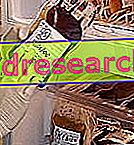Definition and techniques of autohemotransfusion
Before the advent of erythropoietin (EPO), the technique of autohemotransfusion was quite common in the sports world.
Through this procedure it was possible to increase the number of red blood cells, ensuring greater availability of oxygen to the muscles. Thanks to this property, autohemotransfusion was able to significantly increase the athlete's performance level.

Autohemotransfusion is part of so-called "blood doping or emodoping", which includes several doping techniques. In the world of sport it is considered an illegal practice, as it is solely aimed at artificially increasing sporting performance.
Homologous blood doping is based on the use of blood from another person (donor), just as traditionally happens in hospitals.
The second technique is represented by the so-called autologous blood doping (autohemotransfusion) . About a month before the competition by the same subject, on average 700-900 ml of blood are extracted, which are then stored at + 4 ° C and put back into circulation one or two days before the competitive commitment. Following the transfusion there is a sudden improvement in aerobic capacity and performance in endurance tests (cycling, marathon, endurance swimming, trhiatlon, Nordic skiing, etc.), guaranteed by an increase in red cell mass up to 15-20%. On the other hand, auto hemotransfusion does not bring significant benefits to athletes engaged in anaerobic disciplines (weight lifting, jumping and sprint competitions, weight throwing etc.). As an alternative to refrigeration, which requires a maximum storage period of 35-42 days, the blood taken by the athlete can be frozen at -65 ° C in glycerol, then kept for up to 10 years with suitable equipment. This makes it possible to avoid picking too close to the time of the race, a period in which the athlete is engaged in training that would be compromised by the performance loss associated with the draw. In practice, the athlete now has the opportunity to pre-deposit his blood even years before the race.
The autohemotransfusion technique is also used in medical practice, for example in preparation for major surgical procedures.
Positive effects and health hazards
Born in Ferrara in the first half of the 1980s, autohemotransfusion causes an almost immediate increase in the erythrocyte mass (within 48 hours of reinoculation there is an average increase in plasma hemoglobin from eight to 15%). After the transfusion, the athlete is thus able to increase his performance from 5 to 10%.
Following the initial sampling, the body instead takes about 6 weeks to restore normal hemoglobin levels.
Compared to this method, auto-hemotransfusion neutralizes the risk of infection (AIDS, hepatitis, etc.) and avoids incompatible blood reactions.
However, auto-haemotransfusion is not free of side effects: first of all the athlete experiences a diminished performance in training in the days following the sampling and the risk of blood clots forming after reinoculation (infarction, embolism, stroke) is not negligible.
In addition, autohemotransfusion introduces important amounts of iron into the body, with the risk that these will compromise the functionality of the storage organs (liver, spleen, pancreas and kidneys), already proven by intense physical activity.
Anti-doping controls and biological passport
In recent years the practice of auto-haemotransfusion has returned to vogue, after being retired from the discovery of recombinant erythropoietin and related substances. The advantage of this doping method was the lack of anti-doping tests able to identify the athlete who resorted to it. Although autohemotransfusion has a lower efficacy than erythropoietin, it was precisely the lack of tests able to identify it that decreed its recent success. In the case of autologous blood doping, on the other hand, in the athlete's blood, minor antigens of the donor's red blood cells can be easily detected, thus determining the positivity and the consequent disqualification.
Although doping tests have been developed that can potentially detect auto-haemotransfusion, the simplest and most effective fight against this phenomenon, and to blood doping in general, derives from the periodic and mandatory monitoring of hemoglobin, hematocrit, red blood cells and reticulocyte levels in athlete's blood ( biological passport ). Significant differences in these values between one measurement and another (eg> 13-16% for hemoglobin) cannot be due to a physiological variation, and are therefore a warning of doping practices or of ongoing diseases. On the basis of these data, an athlete, even in the absence of traces of doping products under anti-doping examination, can still be considered positive when significant variations of his hematological parameters emerge with respect to the historical reported in his biological passport. In the case of suspicious values, but not sufficient from a statistical point of view to declare the positivity with certainty certainty, the athlete is subjected to specific doping controls and to closer monitoring.



